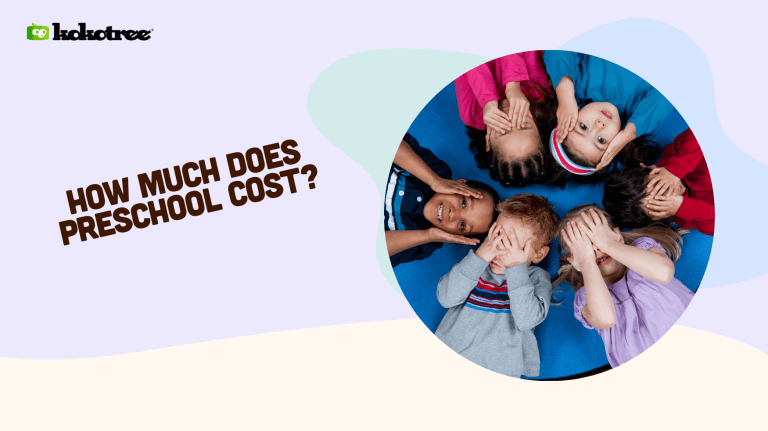

The national average cost for preschool in the USA varies widely, from $4,460 to $13,158 per year. This equates to approximately $372 to $1097 per month. This cost can be even higher in some states and cities, and the type of preschool can also affect these averages.
Preparing your child for the journey of lifelong learning is an exciting phase for any parent. Preschool plays a vital role in this journey, fostering your child’s cognitive, emotional, and social development.
However, the question looming in many parents’ minds is – how much does preschool cost per month? While the cost varies depending on numerous factors, we aim to provide you with a detailed breakdown in this blog post.
On average, parents in the United States spend around $8,809 annually on preschool, which amounts to approximately $734 per month. Remember, these figures can fluctuate based on factors such as location and the specific type of preschool.
The monthly cost of preschool can range greatly depending on several factors:
Discover more about How to Choose a Preschool.
Understanding the cost of preschool breakdown can help you better plan your budget:
Remember, costs can vary significantly from one preschool to another, so it’s crucial to ask for a detailed breakdown of what is included in the fee structure. This will help you avoid any surprises and budget effectively.
Preschool is an investment in your child’s future. Here are some steps to help you budget for preschool effectively:
The key to budgeting for preschool effectively is planning, researching, and asking the right questions. With the correct information and a good strategy, you can navigate this process more comfortably and secure a great educational start for your child.
Additional reading: First Day of Preschool. How to Prepare Your Child
There’s no denying that enrolling your child in a preschool curriculum can be a significant expense, but there are strategies you can employ to make it more affordable. Here are some tips to help you save on preschool costs:
Remember, savings can be found in unexpected places, and every little bit helps. By spending time researching and exploring these avenues, you can make preschool more affordable.
Securing financial aid can greatly reduce the financial burden of preschool education. There are a variety of resources available, which include:
Navigating through these options may seem daunting, but the savings can be significant. Take the time to explore all avenues and remember to ask preschool administrators and other parents for their advice and recommendations. It can also be beneficial to consult with a financial advisor who is familiar with education-related expenses and aid.
There are several websites and resources where you can search for financial assistance and scholarships for preschool. Here are some options:
Additionally, consider reaching out to local community centers, churches, and nonprofits in your area. They often have information on local scholarships or subsidized preschool programs. Remember, research and persistence can be key to securing aid, and every little bit helps when it comes to financing your child’s education.
Alternatives to traditional preschool can be more cost-effective. These include cooperative preschools where parents and teachers share the responsibilities, home-based preschools, or online learning platforms like Kokotree, which offer a library of safe educational videos for preschoolers and toddlers.
Although the cost of preschool can seem daunting, these alternatives offer versatile and affordable solutions. It’s about finding the right fit for your family’s needs and circumstances. No matter the choice, remember that early education sets a foundation for your child’s lifelong learning journey.
Yes, some free or low-cost preschool programs are available, like Head Start, state-funded preschool programs, or preschool cooperative programs.
In many cases, parents can get a tax credit for preschool costs. Check with a tax professional to understand your eligibility.
Preschool fees in the US average around $8,000 per year, or about $670 per month.
The minimum age for preschool in the USA is typically 3 years old, though some programs accept children as young as 2. Learn more: Preschool Age. What Age is a Preschooler
In some states, pre-kindergarten is indeed free, typically for 4-year-olds and sometimes 3-year-olds. However, availability varies by location and family income.
The difference between preschool and pre-kindergarten lies mainly in the age group and curriculum focus. Preschool is generally for children aged 3-4 and focuses on social skills and basic pre-academic skills. Pre-kindergarten is for older 4 or 5-year-olds, focusing more on academic preparation for kindergarten. Learn more: Difference Between Preschool and Kindergarten
In most US states, kindergarten is not legally required. However, it’s highly recommended for child development and academic readiness.
The standard age to start kindergarten in America is 5 years old, with a cut-off birthdate that varies by state.
With this guide, we hope to help you navigate the financial aspect of your child’s preschool journey. Remember, every penny invested in your child’s early education yields fruitful results in their overall development.




